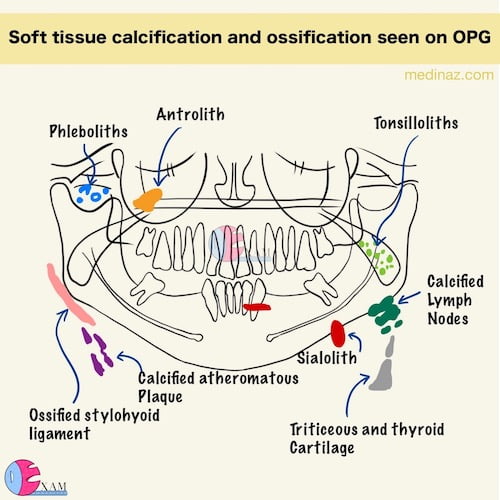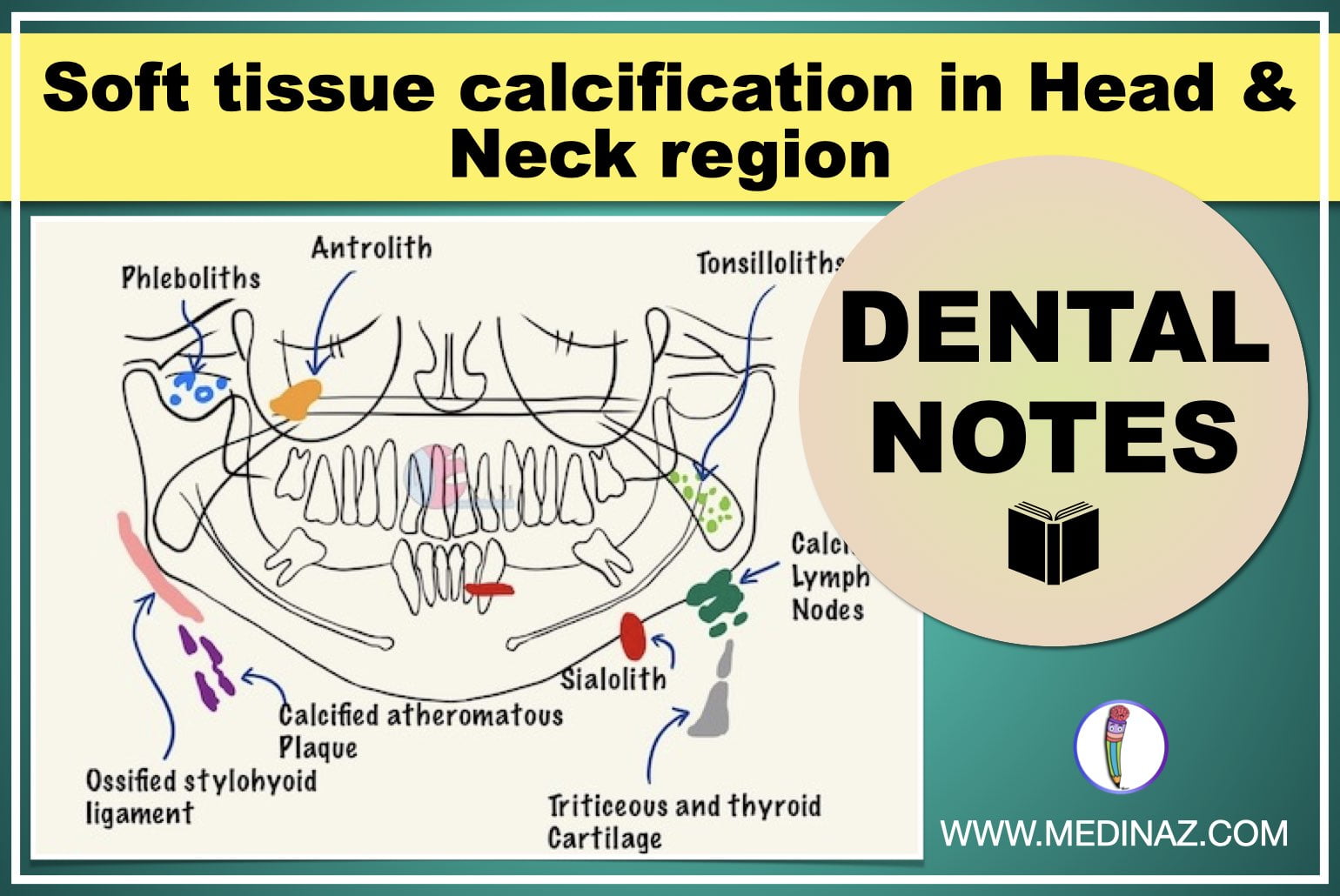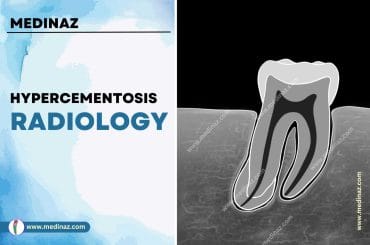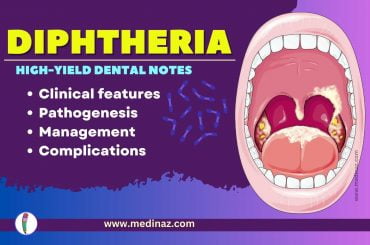Soft tissue calcification in Head & Neck region may developed in a wide variety of unrelated disorders and degenerative processes.
It may arise from pathological mineralization by deposition of calcium phosphate essentially in an unorganized manner known as “heterotopic calcification.” (ref)
They are of 3 types:
- Dystrophic calcification
- Idiopathic calcification
- Matastatic calcification
Dystrophic calcification
Dystrophic calcification refers to calcification that forms Im degenerating, diseased and dead tissue despite normal serum calcium and phosphate level.
Idiopathic calcification
Idiopathic calcification (on calcinosis) results from deposition of calcium in normal tissue despite normal calcium and phosphate levels.
Metastatic calcification
Metastatic calcification occurs when minerals precipitate into normal tissue as a result of higher than normal serum levels of calcium and phophates.

Soft tissue calcification in head and neck region: Classification
A. Dystrophic calcification:
- General dystrophic calcification of the oral region
- Calcified lymph nodes
- Dystrophic calcification in the tonsils
- Cysticercosis
- Arterial calcification – Monckeberg’s medial calcinosis (Arteriosclerosis) – Calcified atherosclerotic plaque
B. Idiopathic calcification
- Sialoliths
- Phleboliths
- Laryngeal cartilage calcifications
- Triticeous cartilage calcification
- Thyroid cartilage calcification
- Rhinolith / Antrolith
C. Metastatic calcifications
- Ossification of the styloid ligament
- Osteoma cutis
- Myositis ossificans
Check the other Medinaz Dental Notes
A Visual Learning Platform





